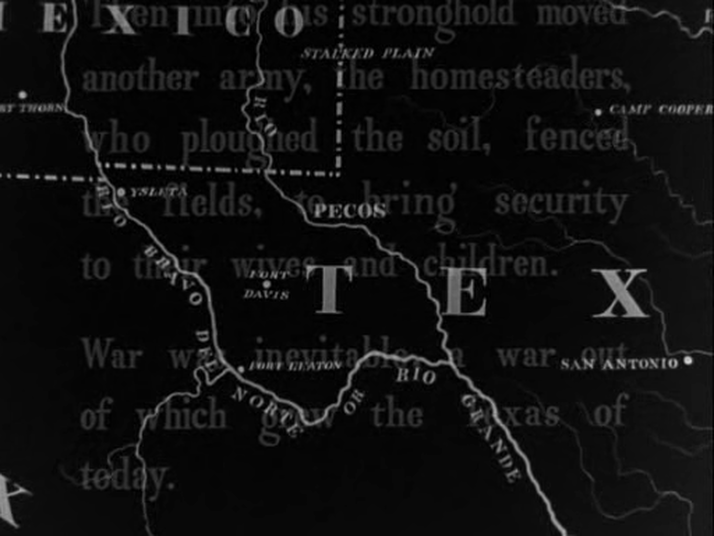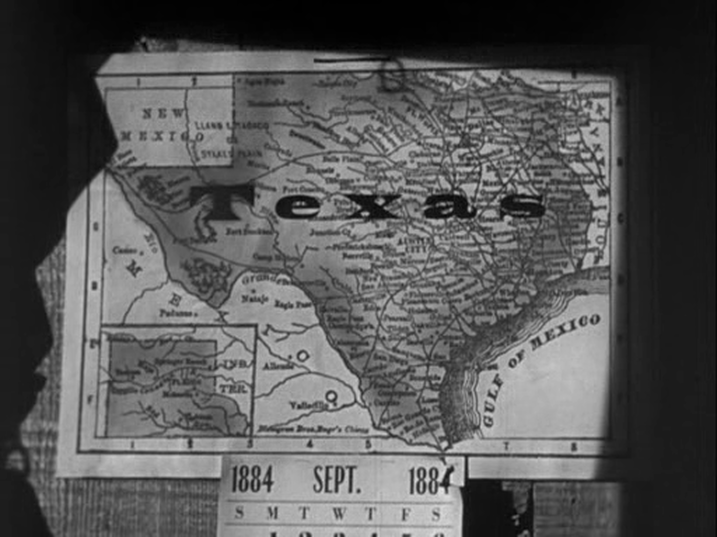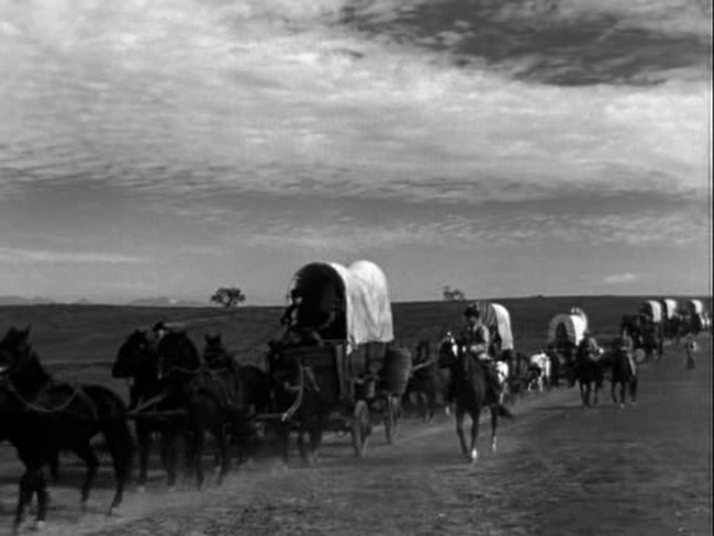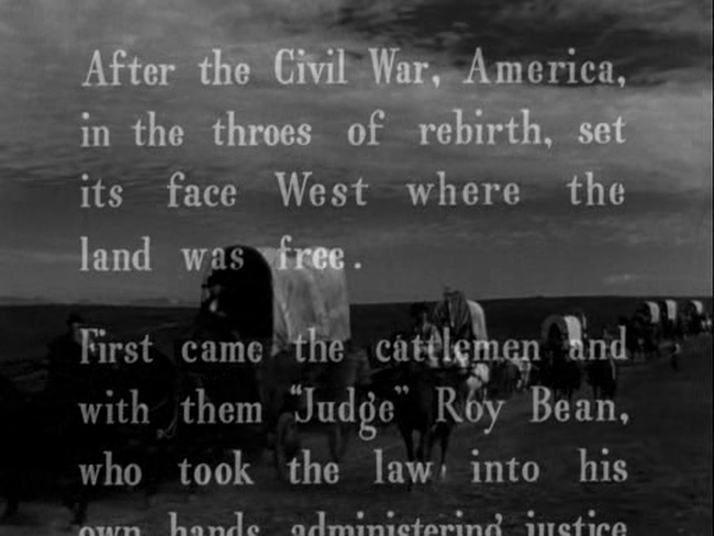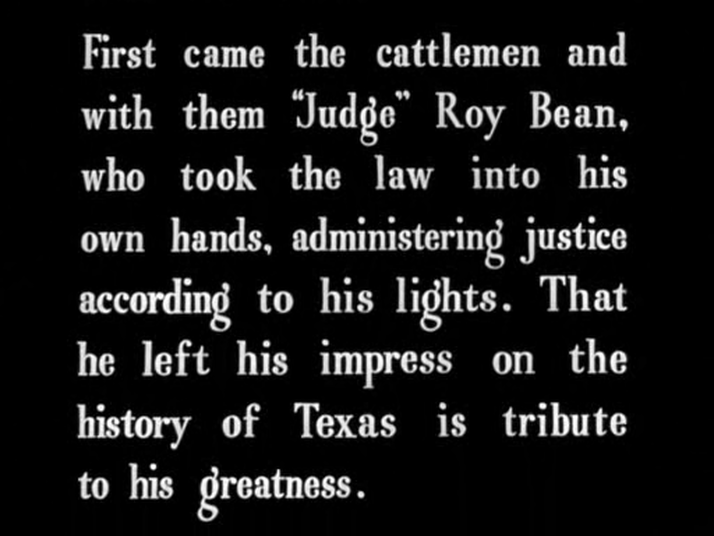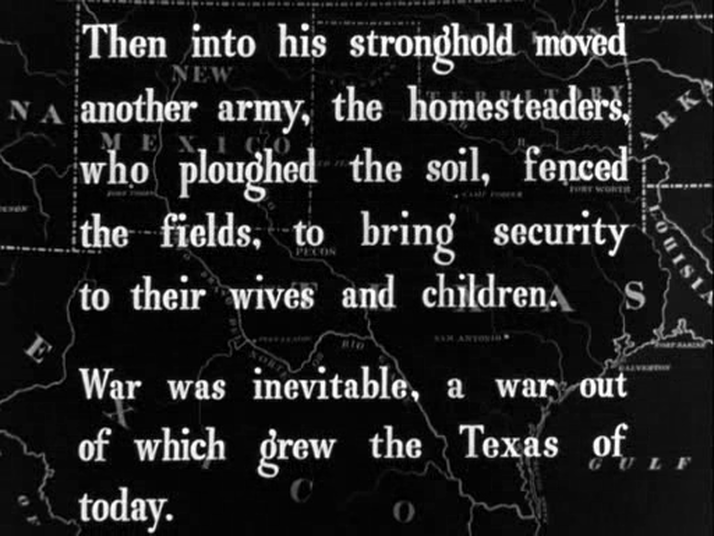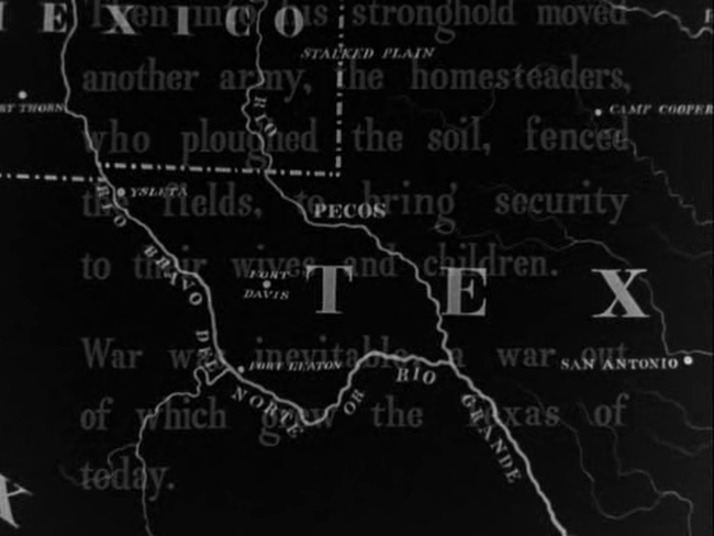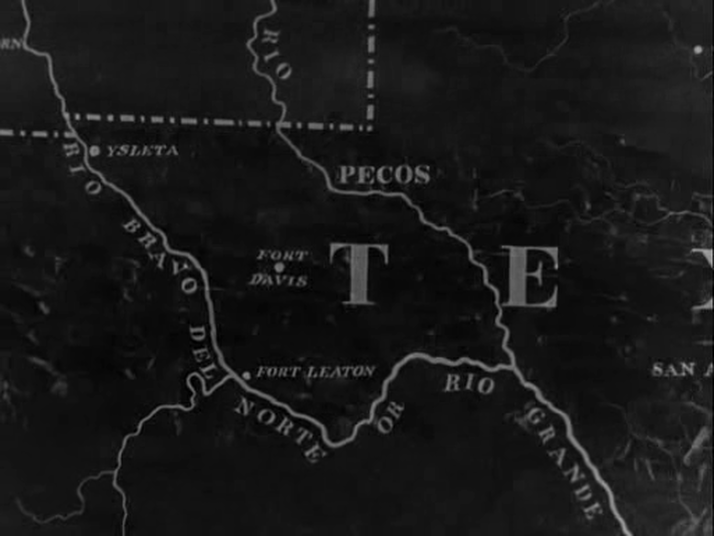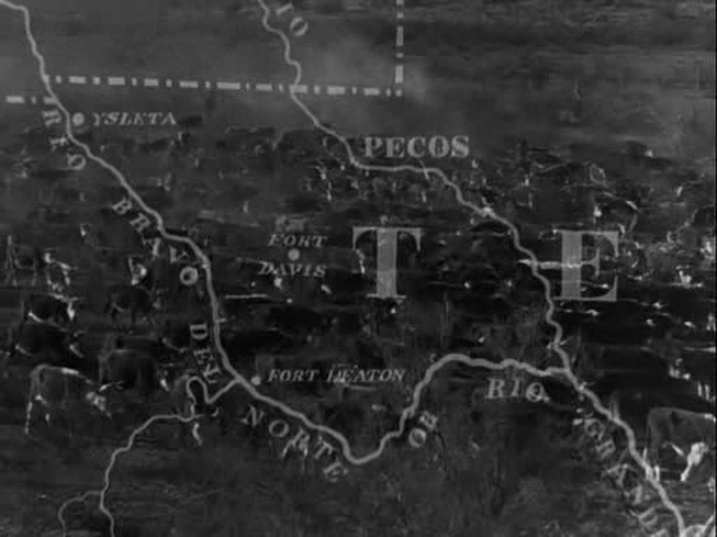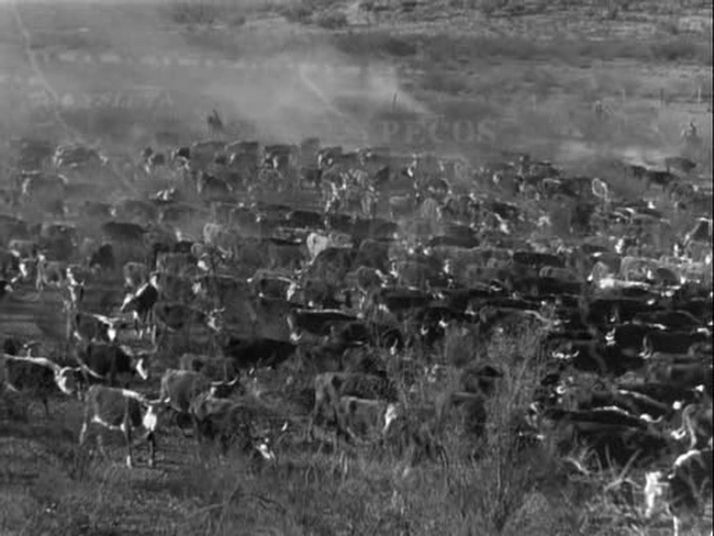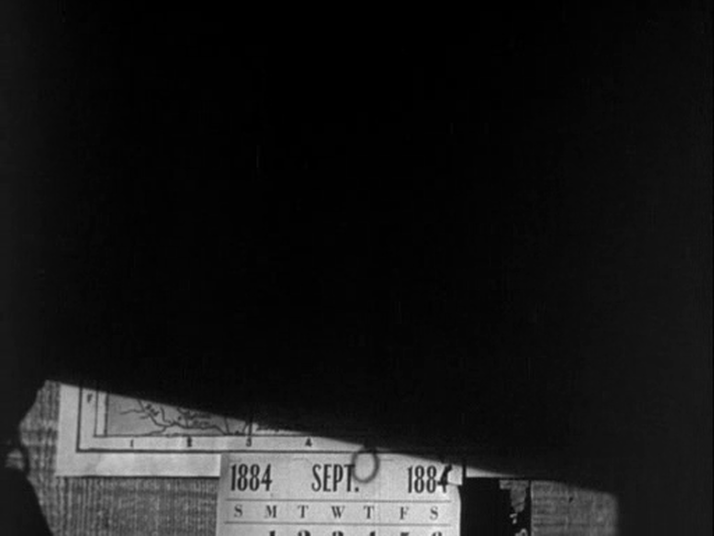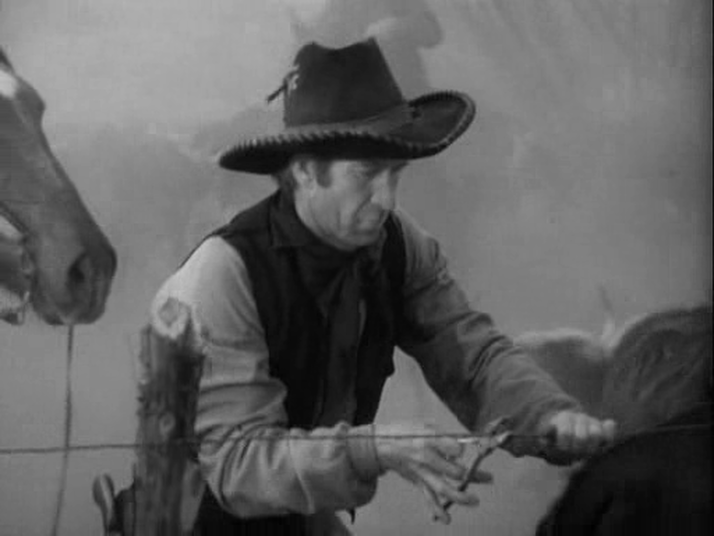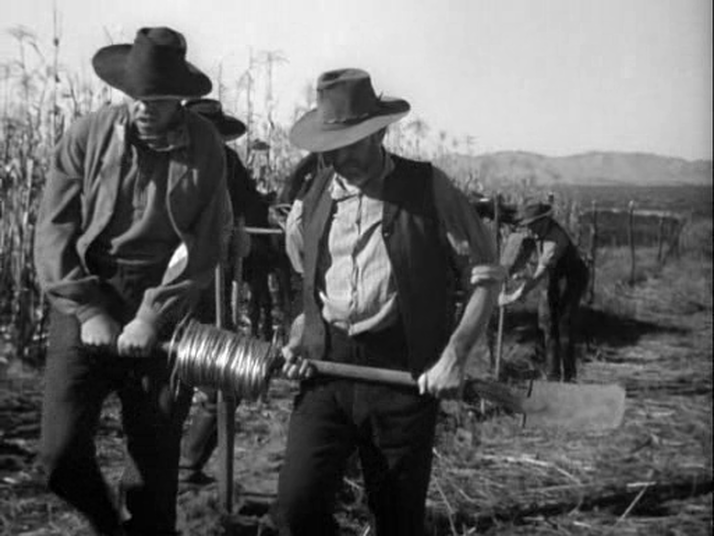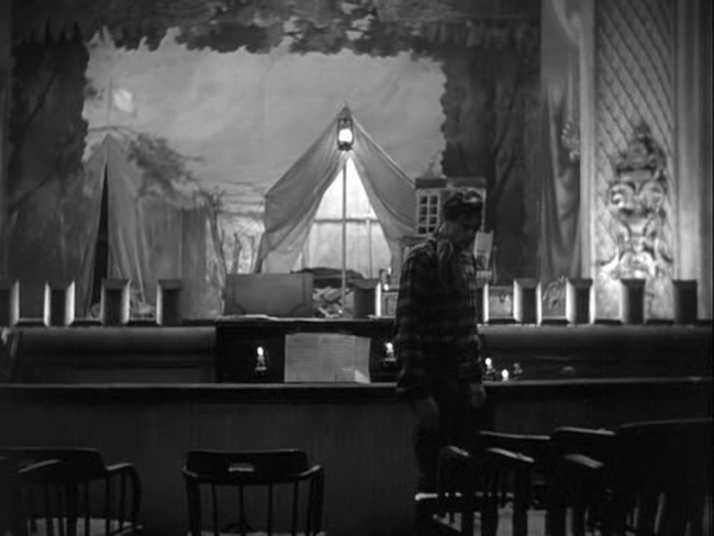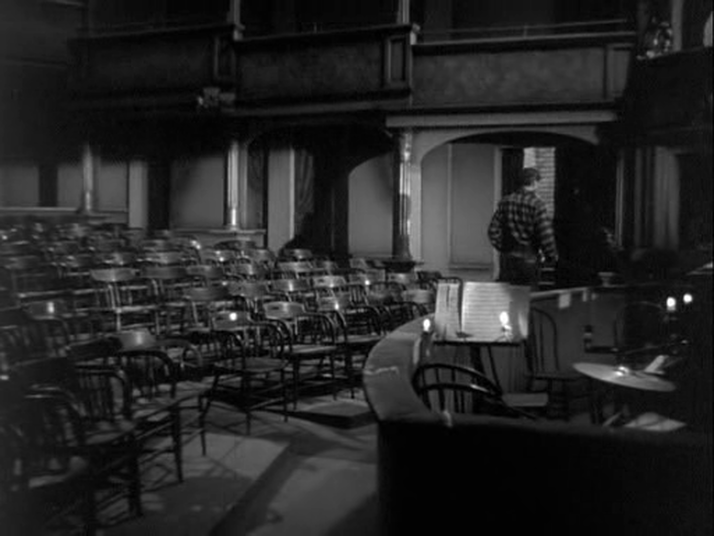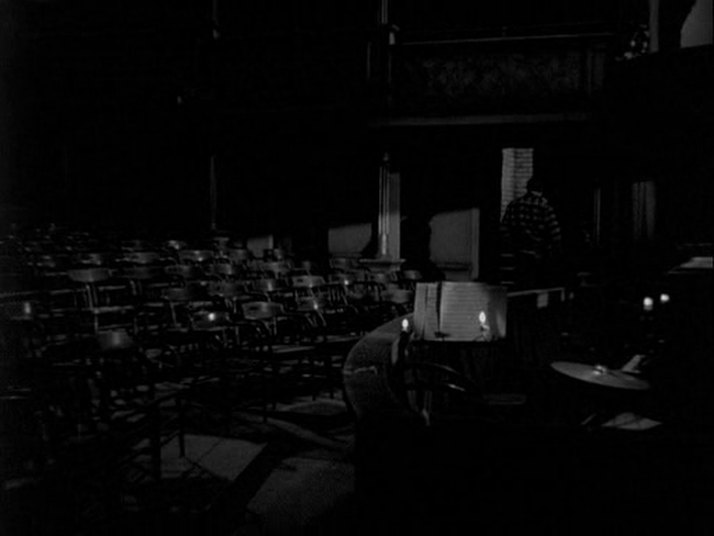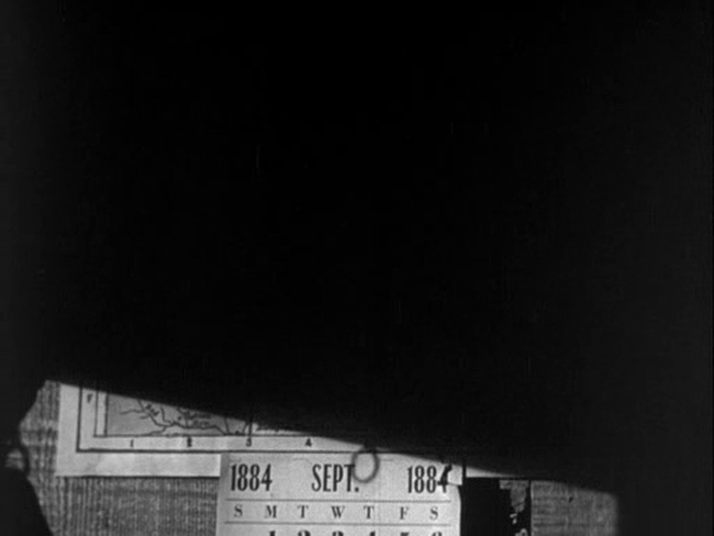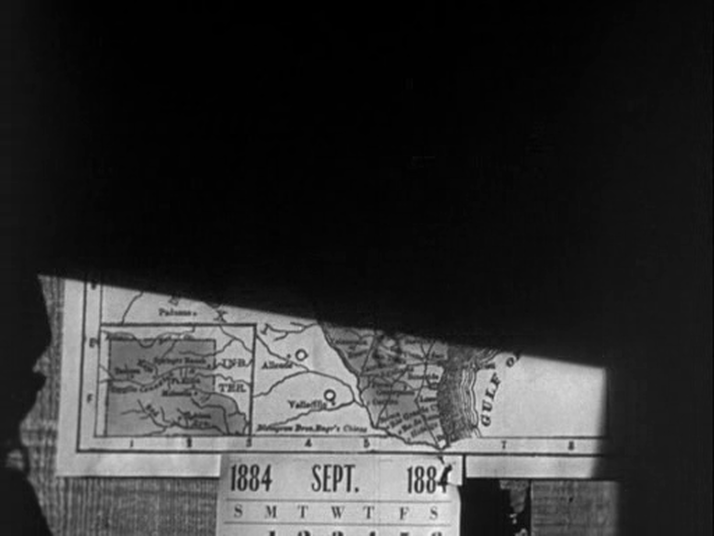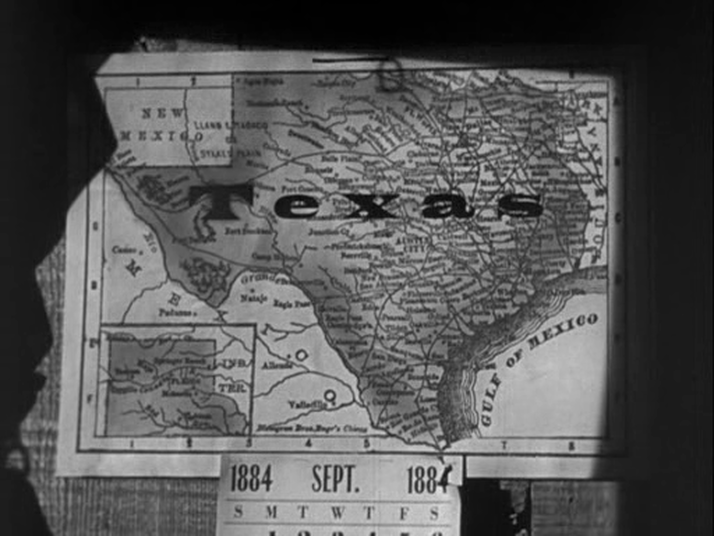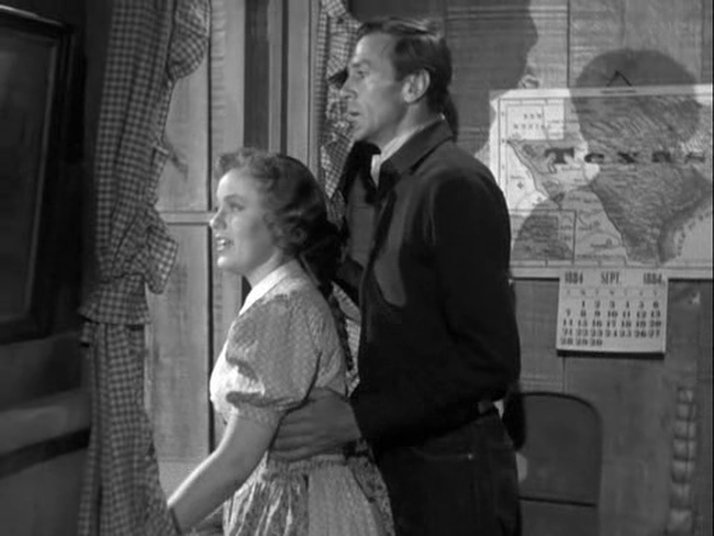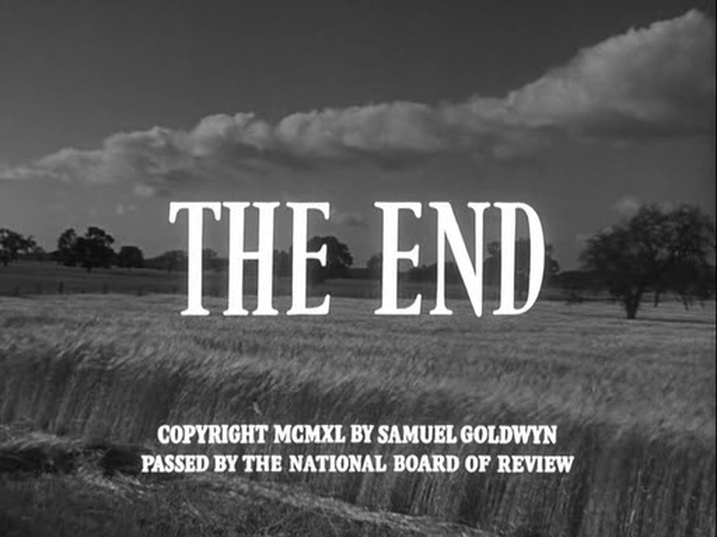Raymond Bellour (with Janet Bergstrom), ‘Alternation, Segmentation, Hypnosis’, in Constance Penley (ed.), Feminism and Film Theory (London: Routledge, 1988), pp.187-88.
The bookending maps are opposed in several, complementary ways:
1/ The first map is outside of the narrative, an illustrative accompaniment to the narration superimposed upon it, whereas the second is inside the narrative, integral to the mise-en-scène of the last scene.
2/ The details of the first map are only partially readable, because of the superimposed narration but also because the word that names it - 'Texas' - is cut off as the camera pulls out (it is not a static shot), and also because the full outline of the state is not shown, as if the state were not yet fully formed. The second is a complete, fully readable map of Texas.
3/ Through the narration, the first map has a loose chronology associated with it: 'After the Civil War, America, in the throes of rebirth...'; 'First came the cattlemen, and with them "Judge" Roy Bean...'; 'Then into his stronghold moved another army, the homesteaders...'; 'War was inevitable, a war out of which grew the Texas of today.'
The second subject is tied to the theatrical motif. The end of Judge Roy Bean's story is the abortive performance of Lily Langtree, who is replaced on the stage by Gary Cooper ('The Westerner'), dramatically revealed as the curtain rises. The end of this sequence shows the empty theatre as the curtain comes down. We do not see it come down on the stage, only how the lighting of the scene changes as the shadow of the curtain falls:
The 'stage', now, is the domestic space, the conjugal bedroom. The displacement of theatricality onto cartographic display is one of the representations around the couple that, in Bellour's words, 'allow for the two of them to be inscribed together in a symbolic framework':
